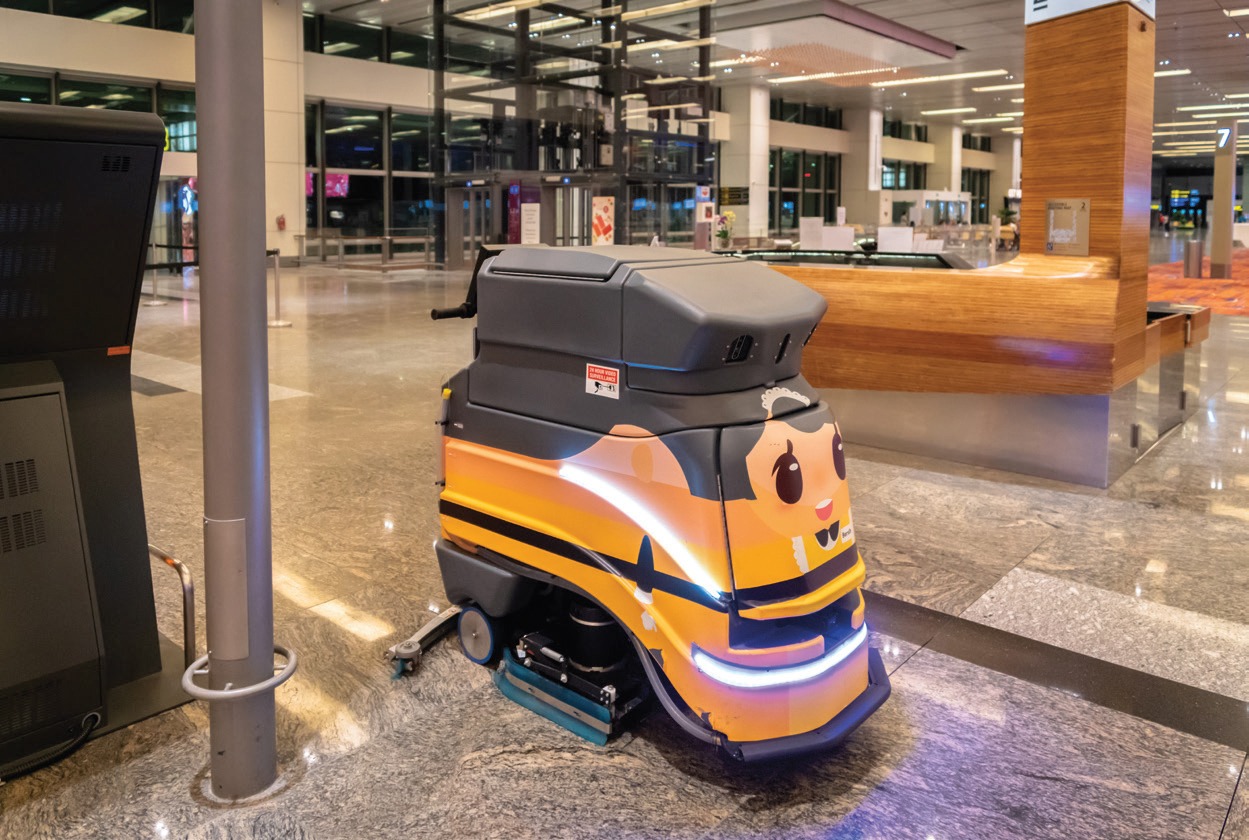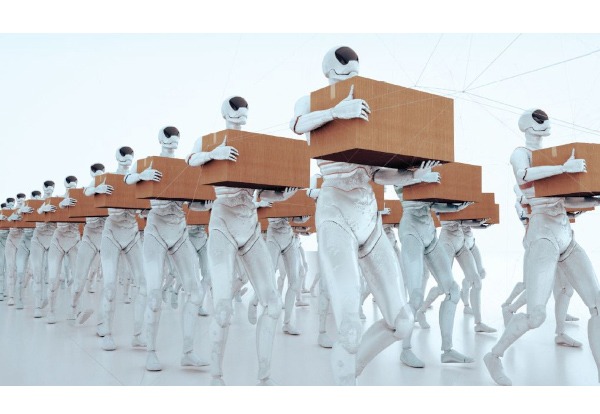If deployed in the right way, automation is capable of addressing key societal, economic and sustainability issues. William Goodwin analyses the potential impact of robotics on the packaging sector, and advocates its accelerated global adoption.

“If every tool when ordered, or even of its own accord, could do the work that befits it, then there would be no need either of apprentices for the master workers or of slaves for the lords.” The opening quote can be attributed to Aristotle. Yet the school of thought that this quote refers to was not one that materialised until well over two millennia later. It is, in fact, the earliest known recorded reference to AI.
Fast forward to the modern day, and it would be hard to argue that even a visionary such as Aristotle wouldn’t be astounded at the extent to which nonhuman intelligence, automation and robotics have been embedded into our everyday lives.
Indeed, the word association game will continue to conjure up images of typical pop culture characters such as R2-D2, C3PO or WALL-E when ‘robot’ is mentioned. In reality, however, robotics has already been realised in more practical and nuanced ways.

According to IMARC Group, there were 12 million robotic units worldwide in 2019, spanning everything from self-driving cars to automated domestic hoovers and surveillance solutions. So, how have robots – which we still consider to be so novel – become so widespread so quickly?
It is important to note that robots aren’t being invented for the sake of it. As mentioned, the vast majority do not appear as they are depicted in sci-fi films like Star Wars, but they are still valuable human companions. Consider the application of robotics in industry. Here, automated processes delivered by complex, programmable machines have often become the foundation upon which vast economic, productive and competitive advantages can be built.
In packaging manufacturing processes, robots are used to optimise and improve previously laborious manual processes such as picking and packing, warehousing and defect identification. Robots are effective because they simultaneously improve speed and reduce error. For instance, let’s say you need to slightly alter specifications. Using robotic process automation, this can be achieved efficiently and accurately with the touch of a few buttons, consistently and repeatably, on a 24/7 basis (robots, of course, do not need to sleep). The benefits are clear, and operations will only be upscaled from here.
Human-robot harmony
As is often the way with changes that challenge the status quo, the rise of automated technologies, particularly their application within key industries, has been met with a degree of scepticism.
On the one hand, a quick Google outlines the extensive benefits that come with the implementation of robotics, AI, machine learning and other automated technologies already mentioned. On the other hand, however, there are rising narratives of ‘automation for automation’s sake’, and a fear of jobs being replaced by robots at scale.
One organisation trying to dispel the concerns of the latter is EUnited, part of the European Robotics Industry. It launched a ‘Good work charter’ in January this year – a report that has identified ten focus areas where action is most needed in order to ensure automation has the most positive impact possible in helping to shape the future of work.
The idea is that not all automation is beneficial. Considering how and where these technologies are deployed and used is equally important to maximise their benefits. They have their limitations, they can be costly, and, ultimately, not all problems can be solved through the deployment of robotics technologies. In the announcement of the charter on 28 January this year, Nobel Prize laureate, Christopher Pissarides, co-chair at the Institute for the Future of Work (IFOW), said, “The transition to an increasingly automated and data-driven economy requires changes in work arrangements that need to be adjusted by employers, their workers and government.
“Industry can help by ensuring that their workers are equipped with the skills and knowledge to thrive in the new economy.”
The report focuses not only on headline statistics, figures and economic prosperity. It advocates the need for balance in the deployment of automated technologies, and the creation of systems that work for all stakeholders – employers, employees, government authorities, schools, international organisations, think tanks, investors and more.
It calls upon the need for collective action in answering key questions. Namely, how we can ensure workers acquire the skills needed on the labour market so that robotics may operate in the industrial environment harmoniously with humans. This is the key, and often controversial, issue.
The rise of automation is not a case of human versus robots, where one will prevail and the other will be left out in the cold. All parties remain committed to dispelling fears of mass unemployment caused by automation, and in the majority of cases, automation has had a significantly positive impact on jobs. The key challenge is to manage this transition, where jobs will continue to change, and some are lost while others are created.
Also commenting on the launch of the charter, EUnited Robotics chairman Wilfried Eberhardt said, “The increasing use of service robots outside factories [will] rapidly change the way we work. It is essential to understand that humans will always play a central role in the workplace.”
Sustainability and automation
The sustainability debate is just as interesting as that surrounding the changing workplace, particularly considering some of the existing stigma related to the packaging industry.
Sustainability is often defined as ensuring longevity for future generations, neatly summarising the pressing needs of societies and economies globally. The UN, through its 17 interlinked Sustainable Development Goals, is the primary engine driving change to establish a better and more sustainable future for all. For EUnited and its ‘Good work charter’, automation and robotics have a fundamental role to play in helping to achieve these goals. Focus nine of the charter – aptly named ‘Sustainability’ – hones in on the use of intelligent automated production processes to minimise the global consumption of energy and natural resources, and a move towards a carbon neutral economy.
There is no getting away from the fact that, traditionally, the packaging industry has been a sector contributing to adverse environmental affects because of the widespread use of non-recyclable materials and the carbon-intense life cycles of some plastics. Yet early adopters of automation, robotics and many associated Industry 4.0 technologies are helping to change these negative perceptions by prioritising both people and planet in their processes. The deployment of automated processes has helped to reduce the cost of making environmentally friendly products and improved resource efficiency in production processes themselves, reducing energy consumption and the creation of by-products.
“The robotics industry strives to further reduce the energy consumption of robots,” EUnited’s ambitious charter reads, “by using energy efficient drives, smart standby modes and software to intelligently manage robot movements (for example, slowing the movement down when a faster movement is not needed).
“Flexible and easy-to-use robotic systems facilitate the competitive production of smaller batch sizes and products customised to the local customer base. This paves the way for producing goods close to the customer, thus reducing longdistance transport. Such local production has a substantially lower carbon footprint.” If integrated properly, logically and effectively, automated processes can, therefore, not only help to grow workplace-related ambitions, but, equally, environmental aspirations for a cleaner and greener future.
Britain last
The case on both fronts for an automation-centric industrial transition is clear. The extent to which this has already been realised, however, varies depending on where you’re looking.
Research from the International Federation of Robotics (IFR), released January 2021, provides a good indication of different levels of adoption in key global economies. According to the data, Singapore has positioned itself as the leading light of automation in production processes, with 918 industrial robots having been deployed for manufacturing processes per 10,000 employees.
South Korea (868 units per 10,000 employees), Japan (364 units) and Germany (346 units) round out the top four in this ranking, doing so thanks to a combination of local industry requirements and a commitment to advancing industrialisation.
The UK is ranked 22nd, with just 91 robots installed per 10,000 employees – less than the global average of 113 units.
By region, Europe has the highest level of robot density worldwide, but the UK is lagging. And if it continues to do so, it will reap fewer rewards and find it increasingly difficult to compete as robot adoption becomes key for driving productivity.
Why is this? According to Automatica’s 2020 trend index, which surveyed employees representing 1,000 different organisations, it is not for a lack of desire or willingness to change. Within the survey, 68% of respondents said that the use of robots is essential for the competitiveness of the UK’s economy, and 65% expressed a need to improve education for working with robots, and for such skills to be promoted as a top priority by policymakers in government. Whatever the reason, it is vital that this materialises, in the packaging industry or elsewhere.
The ‘Good work charter’ of EUnited’s European robotics industry
1. Working like humans, not machines: Using robots to perform dull, dirty dangerous or delicate tasks, allowing people to undertake work more suited to human nature.
2. Humans in command: Ensuring robots assist humans, not the other way around.
3. Development of skills: Closing the skills gap that has grown as a result of the pace of technological change.
4. Inspire young people for STEM [science, technology, engineering and mathematics]: Leveraging interesting robotics technologies to inspire young people to pursue the study of STEM subjects.
5. Inclusion and participation: Ensuring robotics promotes inclusion, not exclusion.
6. Creating opportunities: Using robotics to encourage workers to take active roles and perform more advanced tasks.
7. Human-robot collaboration and fusion skills: Maximising the complementary strengths of people and machines to generate vastly improved results.
8. Ease of use: Prioritising the simplification of robots to improve accessibility and lower barriers to entry.
9. Sustainability: Using robotics to make decisive contributions to sustainable consumption of energy and natural resources, and move towards a carbon neutral economy.
10. Tackling demographic change: Addressing possible labour shortages by increasing the use of automated and robotic technologies.
Source: EUnited
